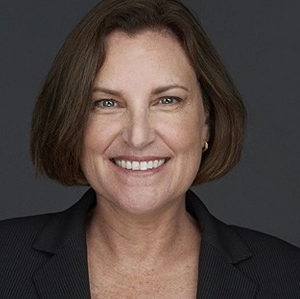As Black History Month draws to a close, Connie Max, executive vice president of LISC Lending, examines how the time-worn structures of borrowing must change if we are ever to narrow the racial wealth gap and see our national economy truly flourish. Nothing less than authentic inclusion and full participation of all people will work—and LISC has some strategies for how to make that happen.
This February, as in so many other years, we have had the chance to see and hear amazing stories of pioneering Black leadership. From science and technology to business and the arts, the narratives reflect the myriad ways Black men and women have fueled our vibrant American culture and advanced our economic growth.
It seems particularly important this year, given rising pressure to ignore our violent racial history. The stories of Black History Month help show us the truth of the American experience. Moreover, they urge us to draw on the lessons of the past to catalyze opportunities for the future.
Certainly, the economic impact of discrimination should compel action. According to a Citi GPS September 2020 report, racial inequality has stymied the U.S. GDP by more than $16 trillion over the last 20 years. In fact, data indicate that if the racial divide were effectively addressed right now, an estimated $5 trillion could be added to economy over the next five years.
Those numbers are staggering. But they can’t really begin to calculate the human cost—the ripple effect of lost opportunities to earn a good wage, grow a business, own a home, enjoy good health, or build wealth for the next generation. These gaps fly in the face of the American ethos that says here, in a country built by Native Americans, enslaved people, immigrants, and refugees, everyone has a fair chance to succeed.
If we want to honor that ideal, we have to invest in making it a reality and change systems to do so.
For LISC, those twin values of equity and opportunity were embedded in our founding by community giants like Franklin Thomas. They are reflected in our decades of work with public, private and nonprofit partners to make our communities stronger and our economy more equitable. And they underpin the racial and socio-economic empowerment that is at the heart of so many of our efforts today, more than four decades after our first community development loan.
You might have seen some examples of this in the newsletters from the LISC lending team, including our work in South Minneapolis to support community ownership in an area damaged by racial unrest, or our expansion of the LISC-managed Entrepreneurs of Color Fund program to fuel equitable small business growth, or investments to bridge gaps in homeownership that prevent millions of Black families from building wealth.
None of this is happenstance. Racial justice is not just the hopeful byproduct of a housing or economic development loan. To succeed, programs and investments must be specifically designed with equity in mind. Systemic change for racial equity must be intentional, persistent and relentless to succeed.
The same is true of additionality. That $16 trillion loss I referenced? It largely reflects a lack of lending to Black-owned businesses, a wage gap for Black workers, and a wealth gap for Black homeowners. More capital, on its own, does not get at the underlying systemic bias that feeds those disparities. It needs to be different capital. Community development financial institutions (CDFIs) like LISC are the “but for” link for many communities to access patient, flexible financing that meets local needs. Capital would not flow to underserved people and places “but for” the intervention of CDFIs and other mission-driven financial organizations. That work has dramatically expanded over the past two years as the mainstream market began looking for ways to have a social impact.

The looming question—the real call to action as 2022’s Black History Month comes to a close —is about what comes next. Can the public urgency for racial equity be sustained? Will corporate and philanthropic investors build on their commitments to justice? Can piloted programs achieve the scale needed to build intergenerational gains?
For LISC, the answer is clear: we aren’t slowing down, not a bit. We are growing programs that address systemic racial barriers related to education, health, jobs, businesses and housing. We are working to support a stronger, more equitable community infrastructure—one driven by local residents and community organizations so that local economies work better for everyone. And we are reinforcing a mission-driven system of finance that supports a broadly shared prosperity.
For more, take a look at some of the loans in LISC’s nearly $500 million portfolio and comprehensive strategies to address racial disparities through Project 10X.
 ABOUT THE AUTHOR
ABOUT THE AUTHOR
Connie Max, Executive Vice President, Lending
Connie Max currently serves as LISC’s executive vice president of Lending. Ms. Max leads the daily operations of the lending division including, originations, closings and asset management of its $425 million portfolio. Ms. Max also supports efforts to raise and deploy special funding sources. Most recently, Ms. Max served as Vice President and Chief Credit Officer for the Nonprofit Finance Fund managing the approval and portfolio management processes. Previously, she served as the Director of Prudential Financial’s Social Investment Division, managing a portfolio of socially motivated investments of debt, equity and tax credits.